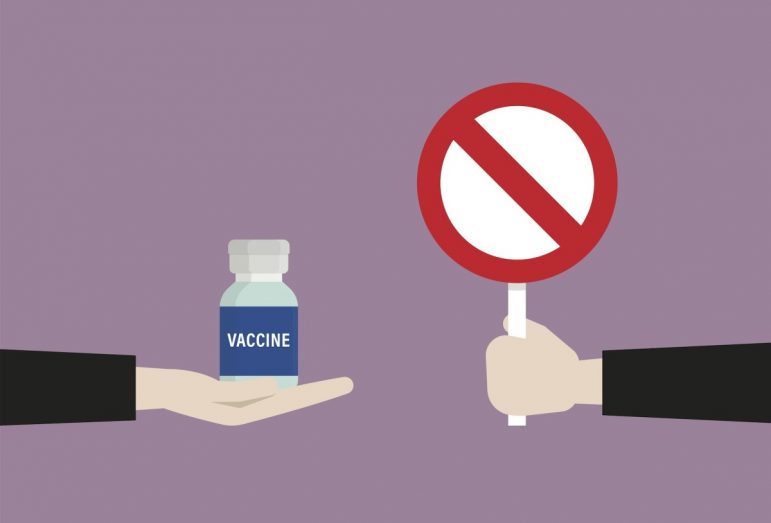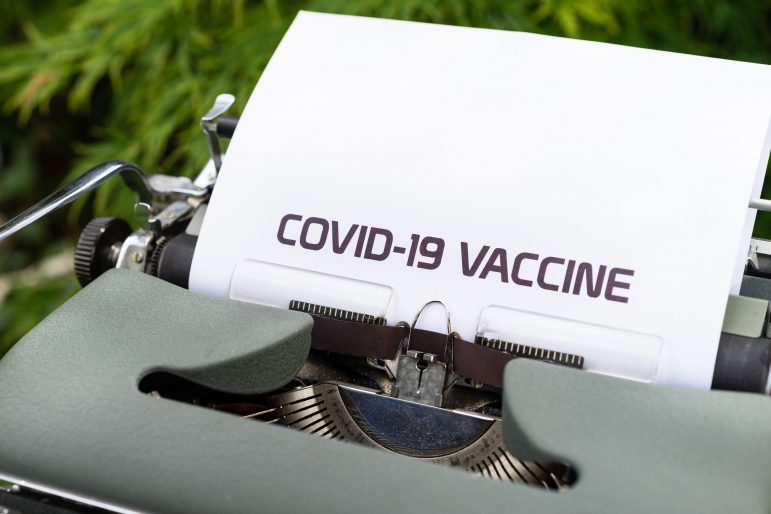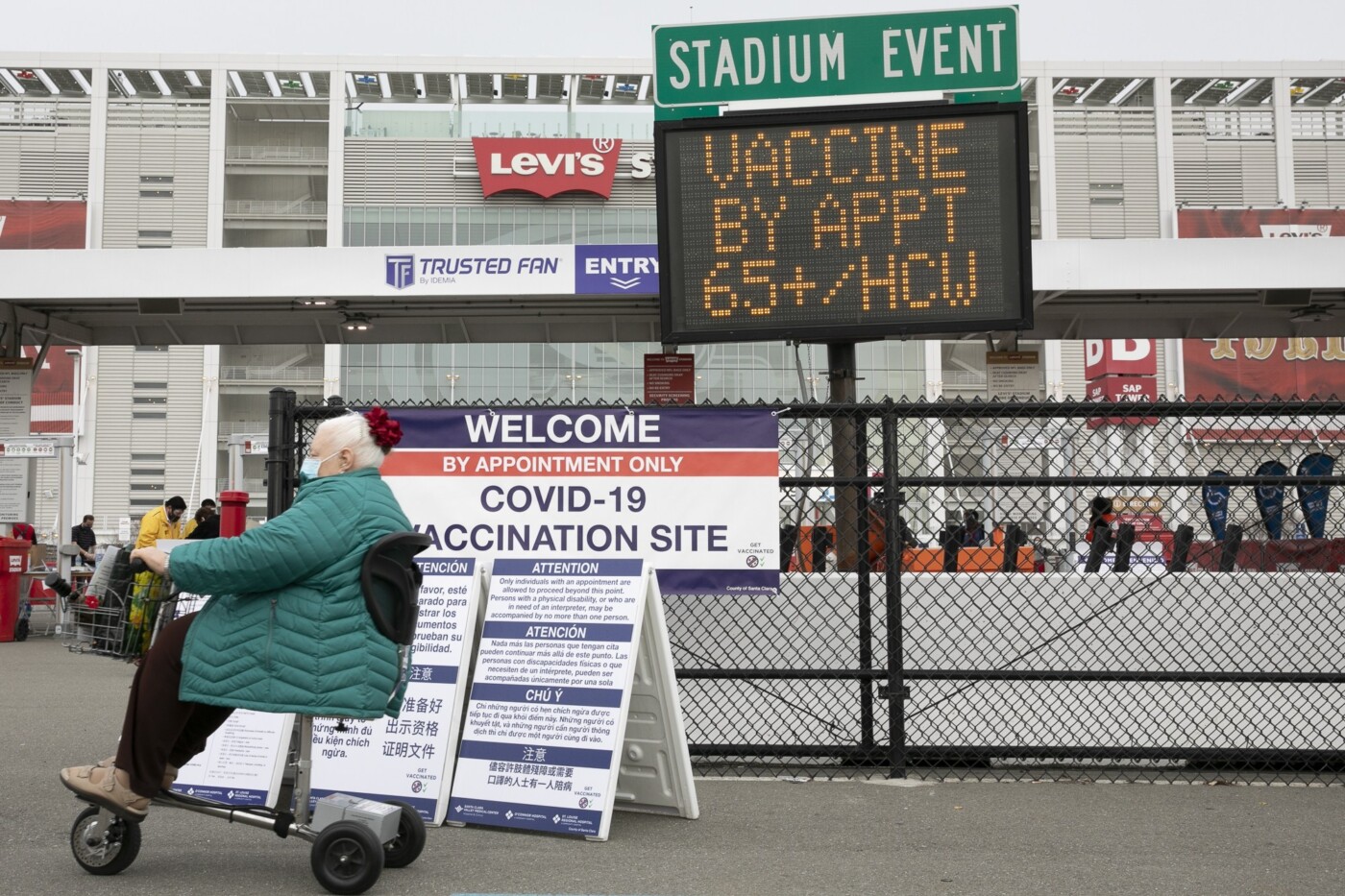Demand for covid vaccines is slowing across most of California, but as traffic at vaccination sites eases, the vaccination rates across the state are showing wide disparities.
In Santa Clara County, home to Silicon Valley, nearly 67% of residents 16 and older have had at least one dose as of Wednesday, compared with about 43% in San Bernardino County, east of Los Angeles. Statewide, about 58% of eligible residents have received at least one dose.
The differences reflect regional trends in vaccine hesitancy and resistance that researchers have been tracking for months, said Dean Bonner, associate survey director at the Public Policy Institute of California, a nonpartisan think tank.
In a PPIC survey released Wednesday, only 5% of respondents in the San Francisco Bay Area and 6% of those in Los Angeles said they wouldn’t be getting vaccinated. But that share is 19% in the Inland Empire and 20% in the Central Valley.
“More urban areas might be hitting a wall, but their number of shots given is higher,” said Bonner. “The rural areas might be hitting a wall maybe even before, but their shots given isn’t quite as high.”
Infectious disease experts estimate that anywhere from 50% to 85% of the population would need to get vaccinated to put a damper on the spread of the virus. But overall state numbers may mask pockets of unvaccinated Californians, concentrated inland, that will prevent these regions from achieving “herd immunity,” the point at which the unvaccinated are protected by the vaccinated. Epidemiologists worry that the virus may continue to circulate in these communities, threatening everyone.
The regional differences could be attributed, at least in part, to political opposition to the vaccine, said Bonner, as about 22% of Republicans and 17% of independents in the survey said they wouldn’t be getting the vaccine, compared with 3% of Democrats.
But officials and epidemiologists see some encouraging signs that the state has yet to hit a wall of vaccine refusal. “As a strongly blue state, one would expect that California is less likely than red states to hit a relatively low ceiling of vaccination, assuming that the access is good and the messaging is strong,” said Dr. Robert Wachter, chair of the department of medicine at the University of California-San Francisco School of Medicine.
As of Wednesday, 77% of seniors in California, and 68% of those ages 50 to 64, had received at least one dose of covid vaccine, according to a KHN analysis. These large percentages reflect the early vaccine eligibility of these age groups and are a hopeful sign considering how difficult it was to get a shot in the beginning of the year, said Rebecca Fielding-Miller, an assistant professor at the University of California-San Diego specializing in infectious diseases and public health.
“I’m very hopeful that addressing access would pick up at least another 10-15% before we need to really start addressing myths and hesitancy issues,” she said.
The state could see a new jump in vaccinations as workplaces, schools and event organizers begin to require the shots, Wachter said. For example, the University of California and California State University systems announced April 22 that their 1 million-plus students and staff members will be required to get vaccinated against covid once the shots are formally licensed by the Food and Drug Administration, likely to occur this summer.

Still, the red-blue political distinction on vaccination is meaningful within California as well as nationally. Despite depressed vaccine demand across the board, counties that lean conservative have lower rates of vaccinations.
In true-blue Los Angeles, 4.5 million first covid vaccine doses have been administered, meaning that about 55% of eligible Angelenos have gotten at least one shot.
But first-dose appointments at county-run sites were down at least 50% last week, said public health director Barbara Ferrer on Thursday. The county has opened several sites where people can walk in and get vaccinated without an appointment, but these walk-ins don’t make up for all of the unfilled spots.
Last week probably marked the first time the county did not administer 95% of the doses distributed to it, she said.
In San Diego and Orange counties, meanwhile, vaccination appointments are going unfilled or taking days to get booked up.
About 20% of appointments in Orange County started going unclaimed on April 25 and the slack has persisted, said Dr. Regina Chinsio-Kwong, deputy health officer.
However, based on survey data from last winter indicating that about 58% of Orange County residents plan to get vaccinated against the coronavirus, the county is still expecting more residents to seek out appointments. As of Sunday, about 49% of residents had received at least one dose.

In San Diego, officials expect all appointments to be filled despite the slowdown, said county spokesperson Michael Workman. About 54% of eligible residents had received at least one dose as of Wednesday.
In San Bernardino, the slowdown started in late March, said county spokesperson David Wert. Only 42% of county residents had gotten at least one dose as of Monday.
Across the state, officials are unclear on the extent to which hesitancy or lack of access to a vaccine are responsible for the slowdown.
Campaigns to educate, convince and reach out to people have started to pick up throughout the country, including targeted messaging for conservatives. Ten GOP doctors in Congress recently issued an ad urging their constituents to get vaccinated.
Santa Clara is shifting most county-run sites to enable walk-ins and expanding evening and weekend hours to make it easier for working people to get a shot. San Diego and San Bernardino are also allowing walk-ins.
Other counties are returning unused doses to the state to be redistributed, a bounty from which Los Angeles County has benefited, according to Barbara Ferrer, director of the county public health department. Representatives from Blue Shield and the California Department of Public Health would not say which counties are sending doses back.
California’s good pandemic news, which has enabled counties to reopen many businesses, is one of the challenges to getting less-than-enthusiastic people in for their shots right now, said Wachter of UCSF.
As of Thursday, California has one of the lowest case rates in the U.S. at 31.3 cases per 100,000 and a covid-test positivity rate of 1.3%.
“My hope is that a strong communication campaign, perhaps coupled with some degree of vaccine requirements, will get some people to jump off the fence,” Wachter said.
